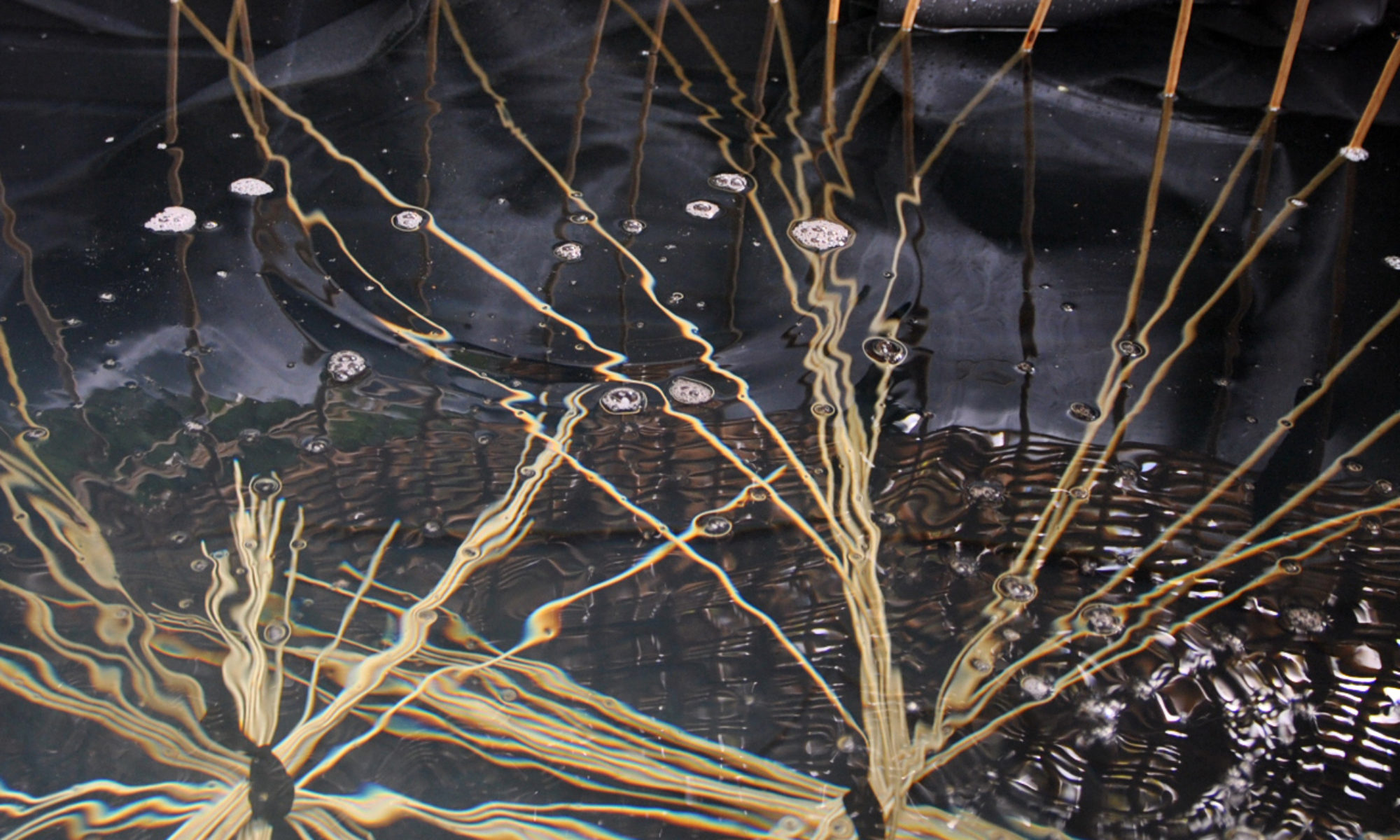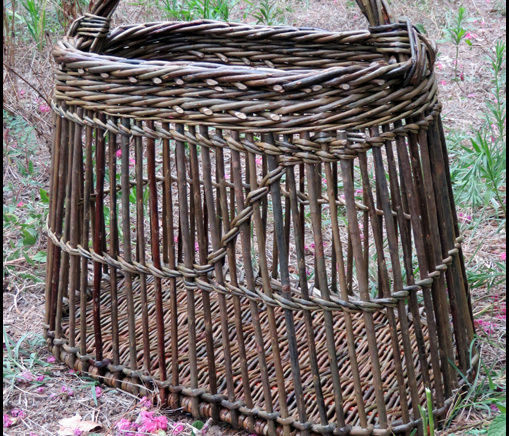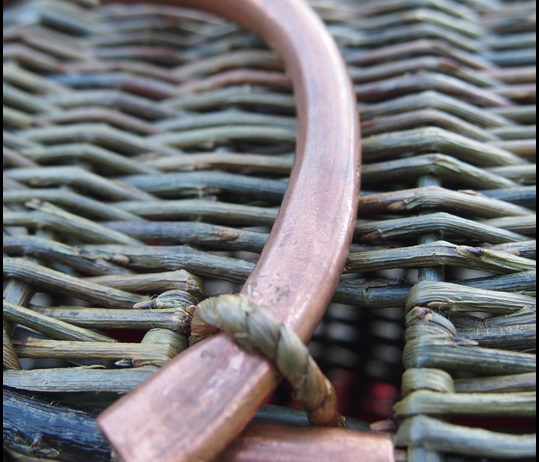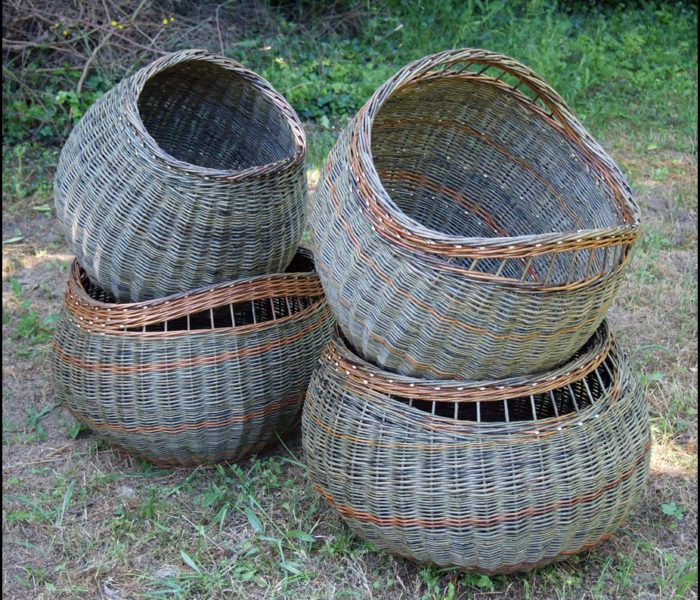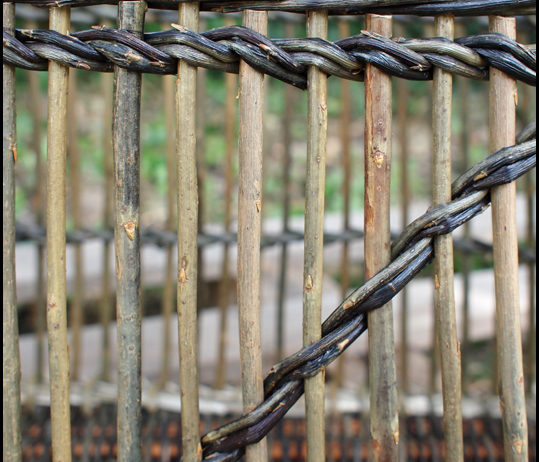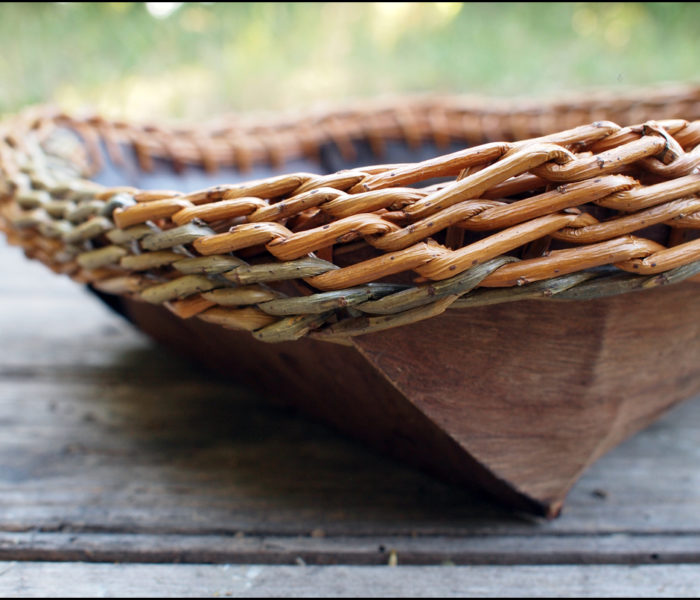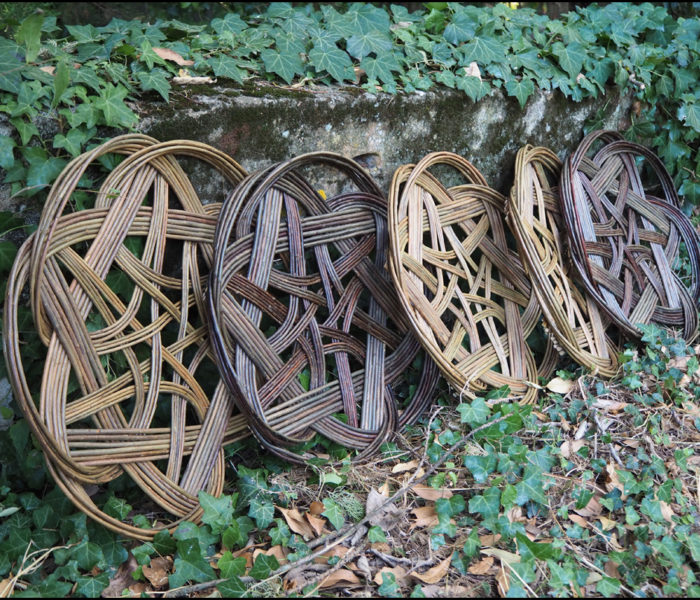After a few years of amateur basket weaving, in 2012 I decided to start professional training by joining the French National School of Willow Growing and Basketry at Fayl-Billot (Haute-Marne, France) from where I graduated a year later.
I started my business as a basket maker in October 2014 while pursuing my career as a professional archaeologist specialized in medieval architecture.
Most of my products are made of willow, either brown or white, but I sometimes use bark or bulrush. I like to work on traditional shapes with pure and elegant lines and a proven technique. These traditional shapes are a bridge toward multiple variations and can lead to more contemporary designs.
In addition to basketry, I practice seat-weaving. I use sedge and rye straw. Natural sedge offers fine shades of green but can also be covered with coloured rye straw for a more sophisticated and contemporary look.
I sell my products at my workshop and at artisan and basket weaving fairs and markets. I also take customized orders.
About wicker…
Wicker is a willow tree that is cultivated in order to provide long and thin rods suitable for weaving. With this purpose, cuttings are planted in dense and bushy rows harvested every winter when the sap has fallen. Thus, baskets are mostly made of one-year-old rods.
[read more=”Read more…” less=”Read less…”]
More than a hundred varieties of willows grow in continental Europe and about thirty of them have mechanical properties that make them suitable for weaving. The willow tree is highly adaptable and consequently highly diverse depending on its growing area. One variety can have different properties depending on the land where it is cultivated. That is why I use willow from three different growers.
I work mostly with brown willow which is a willow with its bark.
It requires very long and variable soaking time depending on the season and willow variety (soaking lasts for about a week or even more depending on the variety of willow or in case of cold weather).
As for white willow, it is a willow that has been peeled after it has been harvested. It has more widespread mechanical properties than brown willow because of the lack of bark that allows for the production of patterns difficult to make with brown willow. Its soaking time is reduced to a few hours depending on the length and thickness of the rods. I like to use this variety to make baskets such as the “toilette Marseillaise”, fishing baskets, luggage, log baskets, etc.[/read]
